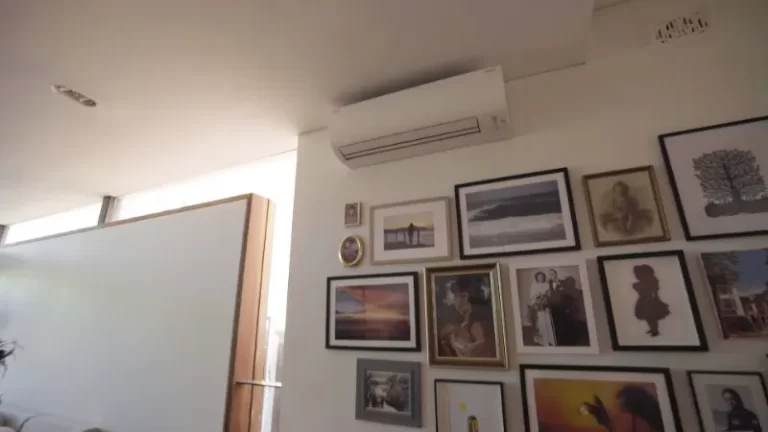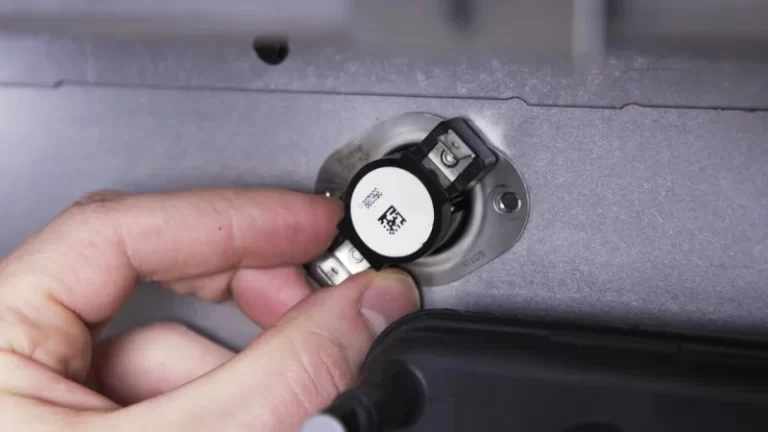Stop Smoke From Going Upstairs: Your Ultimate Guide
Is the lingering smell of smoke mysteriously traveling from your downstairs living area to your upstairs bedrooms? You’re not alone. This common household frustration is more than just an annoyance; it’s a sign that unwanted airborne particles are freely moving through your home, potentially impacting your air quality and overall comfort.
Whether it’s cooking smoke from the kitchen, a neighbor’s cigarette smoke, or the unwelcome scent from a fireplace, understanding how to stop smoke from going upstairs is crucial for a cleaner, healthier living environment. This comprehensive guide will explore the science behind why smoke rises and provide you with actionable, expert-approved solutions to reclaim control over your home’s atmosphere.
You'll Learn About
Understanding the Unwanted Guest: Why Does Smoke Go Upstairs?
Before we can effectively combat the issue, it’s essential to understand the fundamental principles that cause smoke to migrate upwards. It’s not just a random occurrence; it’s a predictable pattern based on basic physics and the unique dynamics of your home’s construction.
The “Stack Effect”: Your Home’s Invisible Chimney
The primary culprit behind smoke’s upward journey is a phenomenon known as the stack effect or “chimney effect.” This process is driven by temperature and pressure differences between the air inside and outside your home. During cooler months, the warm air generated by your heating system, cooking, or fireplace is less dense than the colder air outside.
Because warm air is lighter, it naturally rises. As this warm air ascends to the upper levels of your home, it creates a pressure imbalance. To equalize this pressure, cooler, denser air from outside is drawn into the lower levels of your house through any available cracks, gaps, or openings. This creates a continuous upward flow of air, effectively turning your house into a chimney that carries smoke and other airborne particles along with it.
Air Pressure Differentials: The Pushing and Pulling Forces
Your home is a complex system of interconnected spaces, each with its own air pressure. Activities like running exhaust fans in the kitchen or bathroom, using a clothes dryer, or even just opening and closing doors can create pressure differences between rooms and floors. A room with lower air pressure will naturally draw air in from adjacent areas with higher pressure.
If smoke is present in a higher-pressure area (like the living room with a fireplace), it will inevitably be pulled towards lower-pressure zones, which are often the upstairs bedrooms. This movement is relentless and silent, happening through the tiniest of pathways you might not even be aware of.
Common Pathways for Smoke Infiltration
Smoke particles are incredibly small and can travel through numerous hidden pathways within your home’s structure. Understanding these routes is the first step in sealing them off. Common infiltration points include:
- Stairwells: The most obvious pathway, acting as a direct highway for rising warm air and smoke.
- Gaps around doors and windows: Even small cracks can allow a significant amount of air and smoke to pass through.
- Electrical outlets and light fixtures: The openings in your walls for these fixtures are often not perfectly sealed.
- Plumbing penetrations: Gaps around pipes under sinks and behind toilets can connect different floors.
- Ductwork for heating and cooling: Leaky or poorly sealed ductwork can distribute smoke throughout the entire house.
Immediate and Short-Term Solutions to Stop Smoke in its Tracks
When you’re faced with a sudden influx of smoke, you need quick, effective strategies to mitigate the problem. These short-term solutions can provide immediate relief while you work on more permanent fixes.
Strategic Ventilation: Using Fans to Your Advantage
Proper ventilation is your first line of defense. The goal is to create a controlled airflow that directs smoke out of your house before it has a chance to rise. One of the most effective methods is to use fans to create negative pressure in the smoke-producing area and positive pressure in the areas you want to protect.
To create negative pressure, place a box fan in a window of the smoky room, facing outward. This will pull the smoke-filled air out of the room and exhaust it outside. To create positive pressure upstairs, place another fan in a window blowing fresh air *into* the room. This increased pressure will help to push back against any smoke trying to enter.
Door Management: The Simplest Barrier
It may sound overly simple, but keeping doors closed is a surprisingly effective way to slow the spread of smoke. A closed door acts as a physical barrier, significantly reducing the airflow between floors. For this to be effective, you need to address the largest gap: the one at the bottom of the door.
A simple, temporary solution is to roll up a towel and place it snugly against the base of the door. For a more effective and reusable option, consider a door draft stopper. These weighted fabric tubes create a much better seal and are easy to move when you need to use the door.

Air Purifiers: Your Secret Weapon Against Smoke Particles
While ventilation and barriers can control the movement of smoke, an air purifier actively removes smoke particles from the air. This is crucial for improving indoor air quality and eliminating lingering odors. When choosing an air purifier for smoke, look for a model with a multi-stage filtration system.
A True HEPA filter is essential for capturing tiny smoke particles, while an activated carbon filter is necessary to absorb the gases and odors associated with smoke. Placing a high-quality air purifier in the room where the smoke originates and another in an upstairs bedroom can make a dramatic difference.
Long-Term Strategies for a Smoke-Free Home
To permanently solve the problem of smoke traveling upstairs, you need to address the underlying issues of air leakage and pressure imbalances. These long-term solutions require a bit more effort but will provide lasting results.
Sealing the Gaps: An Airtight Approach
The most effective long-term strategy is to meticulously seal all the air leaks between the lower and upper floors of your home. This process, often called “air sealing,” reduces the pathways for the stack effect to occur. You’ll need to become a detective, searching for and sealing every possible crack and crevice.
Start by focusing on the most common culprits. Use caulk to seal gaps around window and door frames, and apply weatherstripping to the doors themselves. Pay close attention to penetrations in your walls and ceilings. Use foam gaskets to seal behind electrical outlet and switch plate covers. For larger gaps around plumbing pipes, use expanding foam sealant.
Mastering Air Pressure: Creating Positive Pressure Upstairs
Even in a well-sealed home, some air movement is inevitable. A powerful strategy to counteract the upward flow of smoke is to intentionally create a slightly positive air pressure environment on your upper floor. As we touched on with short-term solutions, this involves bringing in more air than is being exhausted.
A simple way to achieve this is by using a window fan to blow fresh, outside air into an upstairs room. The slightly higher pressure created will push air out of any small gaps, preventing smoke from seeping in. This method is particularly effective in homes where it’s difficult to completely seal all air leaks.
HVAC System Check-Up and Optimization
Your home’s heating, ventilation, and air conditioning (HVAC) system can either be a partner or an enemy in your fight against smoke. A poorly maintained or unbalanced system can inadvertently circulate smoke throughout your home. It’s wise to have your ductwork inspected for leaks by a professional.
Sealing any leaks in your ductwork ensures that smoke isn’t being pulled into the system and distributed to other rooms. Additionally, upgrading to a high-quality HVAC filter with a high MERV (Minimum Efficiency Reporting Value) rating can help capture smoke particles as they pass through the system. For persistent issues, you might even explore having a whole-house air purifier integrated into your HVAC system. Sometimes, unrelated issues like having one shower hotter than the other could point to larger plumbing or ventilation problems that a professional can identify.
Solutions for Specific Smoke Sources
The source of the smoke often dictates the best approach to controlling it. Let’s look at some common scenarios and their tailored solutions.
Taming the Fireplace
A cozy fireplace can quickly become a source of frustration if it’s filling your upstairs with smoke. The most common cause of a smoky fireplace is a poor draft. Ensure your damper is fully open before lighting a fire. It’s also crucial to have your chimney professionally cleaned and inspected annually to remove creosote buildup and any obstructions like bird nests.
If your home is very tightly sealed, your fireplace may be starved for combustion air, causing smoke to spill back into the room. Cracking a window near the fireplace can often solve this problem by providing the necessary makeup air. In some cases, structural issues with the chimney or an incorrectly sized flue may be to blame, which would require a professional consultation.
Controlling Kitchen Smoke
Cooking is a frequent source of smoke and strong odors that can easily permeate the entire house. Your kitchen’s range hood is the primary tool for combating this. Make sure you are using it every time you cook, not just when you see visible smoke. For it to be effective, a range hood should vent to the outside, not just recirculate the air through a charcoal filter.
If your current range hood is not doing the job, consider upgrading to a more powerful model with a higher CFM (cubic feet per minute) rating. Keeping your range hood’s grease filters clean is also essential for optimal performance. Much like tackling a tough project like removing polyurethane from brick, persistence and the right tools are key to managing kitchen smoke.
Dealing with Secondhand Tobacco Smoke
If the source of the smoke is a neighbor in an apartment building or an adjacent home, the challenge is greater, but not insurmountable. The primary strategy is to make your living space as airtight as possible. Focus on sealing any shared walls, paying close attention to electrical outlets, plumbing penetrations, and any gaps along the floor or ceiling.
Combining aggressive air sealing with the use of high-quality air purifiers is your best bet. Running an air purifier with a HEPA and carbon filter 24/7 can significantly reduce the amount of secondhand smoke that enters your home. You may also need to have a polite conversation with your neighbor or speak with your landlord about building-wide smoking policies.
Comparative Analysis of Smoke Mitigation Methods
To help you decide on the best course of action for your situation, here is a breakdown of the various methods, their effectiveness, and associated costs.
| Solution | Effectiveness | Cost | Effort Level |
|---|---|---|---|
| Using Door Draft Stoppers | Low to Moderate | $ | Low |
| Strategic Fan Placement | Moderate | $ | Low |
| Using Air Purifiers | Moderate to High | $$ – $$$ | Low |
| DIY Air Sealing (Caulk, Weatherstripping) | High | $ – $$ | Moderate |
| Professional Duct Sealing | High | $$$ | Low |
| Chimney Inspection & Cleaning | High (for fireplace smoke) | $$ | Low |
| Upgrading Kitchen Ventilation | High (for cooking smoke) | $$ – $$$$ | High |
Maintaining a Fresh and Clean Indoor Environment
Once you’ve implemented these strategies, the work isn’t entirely done. Maintaining a smoke-free home requires ongoing vigilance. Regularly clean soft surfaces like carpets, curtains, and upholstery, as they can trap and hold onto smoke particles and odors.
Continue to monitor for any new air leaks, especially as your home settles over time. Remember that creating a healthy indoor environment is an ongoing process. Just as you might eventually find yourself dealing with an aesthetic issue like when you hate the color of your new roof, maintaining good air quality requires attention and care. By understanding the forces at play and taking a multi-faceted approach, you can successfully stop smoke from going upstairs and enjoy a fresher, cleaner, and healthier home.


